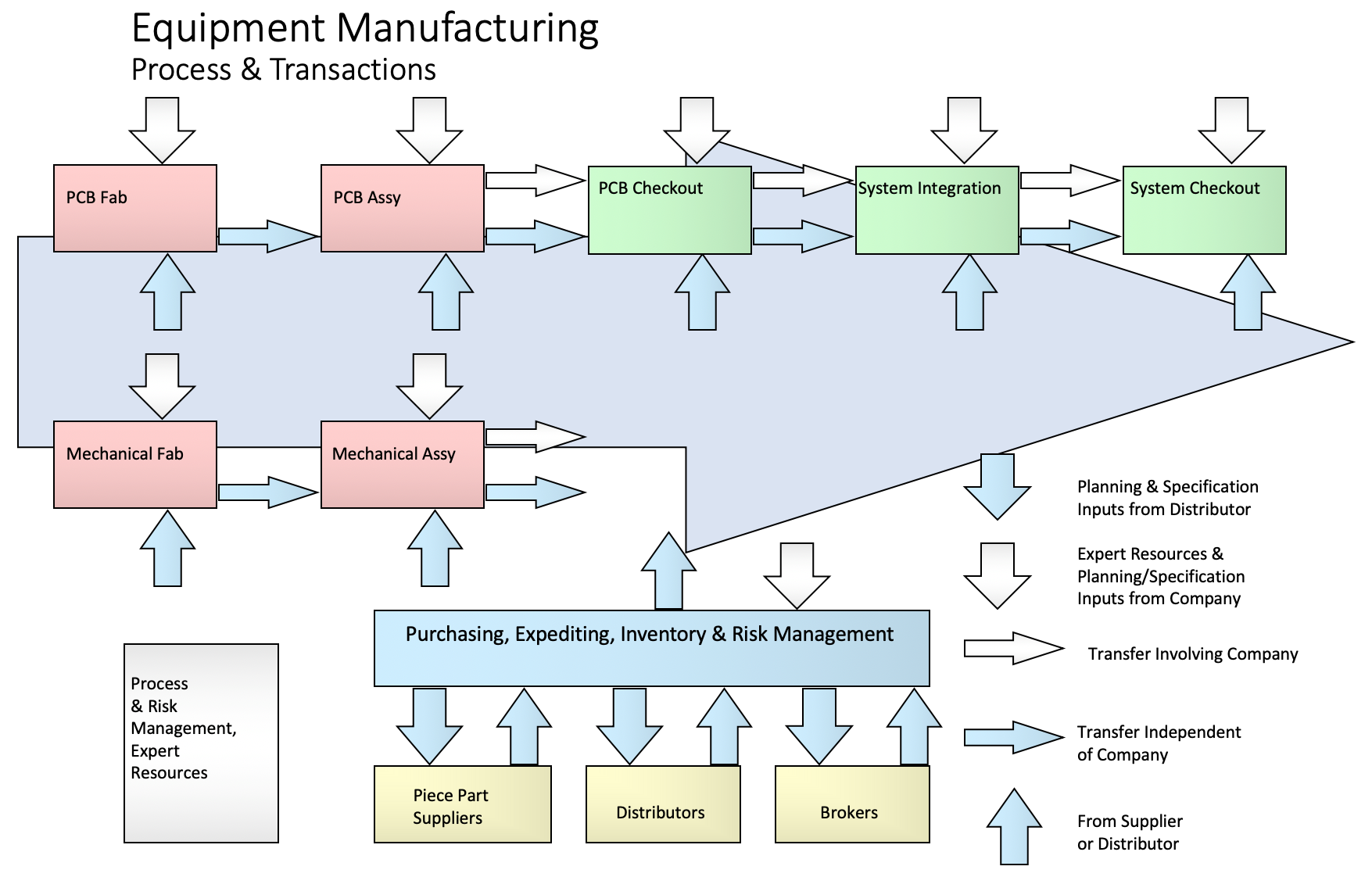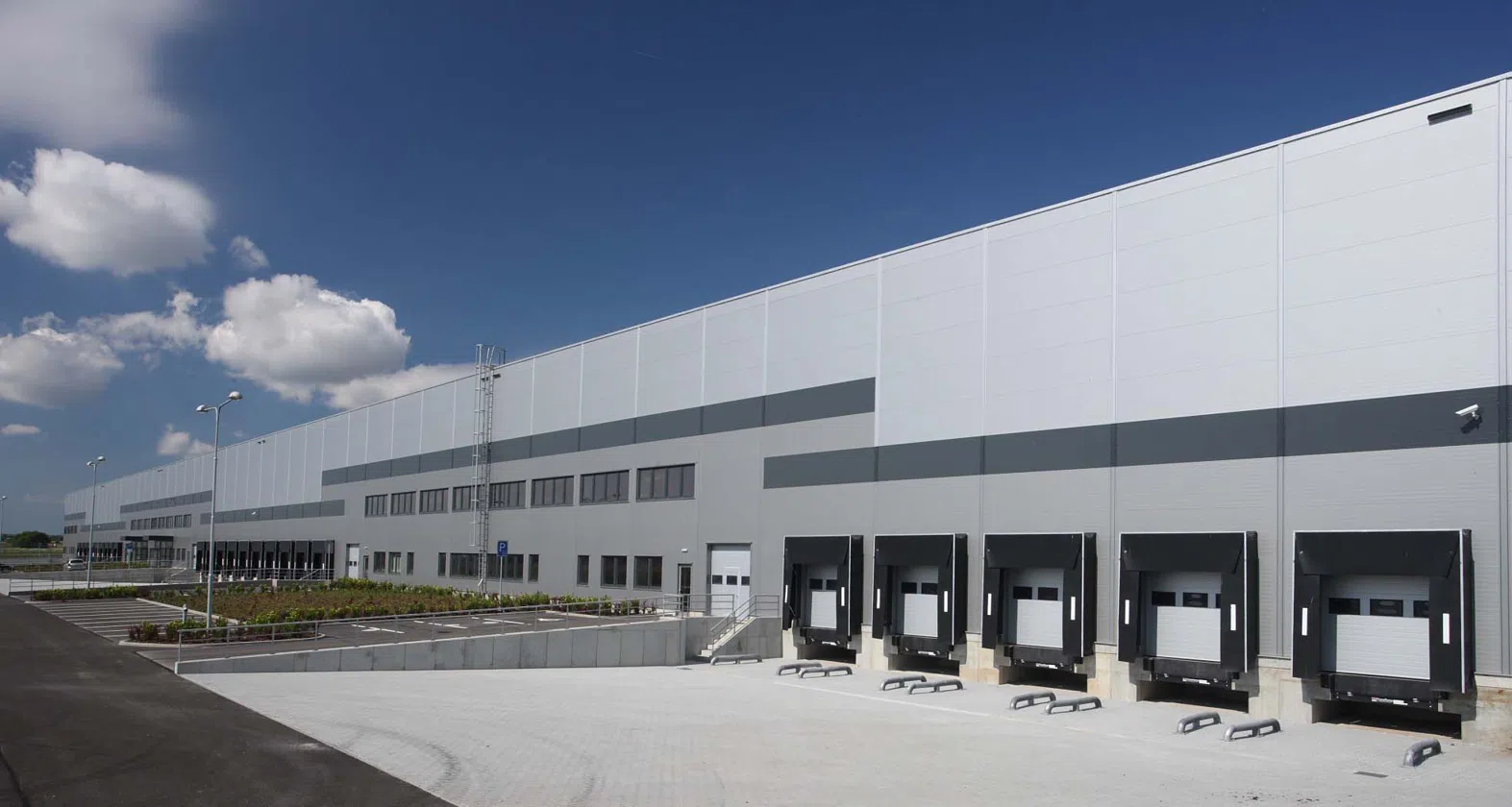Supply Chains and Industrial "Warehouse" Requirements
Last Updated Sept. 9, 2021
See Our List of Metro Home Pages and Select/View Yours

Overview
Many (most?) in the business world have no real need to understand the ins and outs of commercial real estate property types until they experience a need to expand or contract their business. My goal here is to take you briefly through my experience, converting my business experience into an understanding of the Industrial & Flex warehouse market.
As I moved from engineering and business management in semiconductors and related equipment into the commercial real estate industry, my understanding of property types and categories had to evolve and clarify significantly. Here at Warehouse Finder, we are focusing our energies on helping folks navigate the warehouse (or more generally, Industrial & Flex) category of properties. In this article, you’ll find a bit about how my views regarding these categories evolved, and how I’ve integrated what I’ve learned more recently with what I already knew. Hopefully, this summary will give non-real estate professionals a better idea for how the Real Estate industry views building categories. Industrial & Flex is a diverse category worth of further exploration. All of this assumes, of course, that you wish to understand this much - an experienced professional Commercial Real Estate Broker will be happy to do this for you
My Experience Before Becoming a Real Estate Professional
During my 30-year career with Texas Instruments (TI), I pursued product and test engineering, test, and automation equipment development, test equipment manufacturing, aspects of semiconductor manufacturing, and many other areas. While this was happening, I admit that we didn’t have to worry much about acquiring buildings - we had plenty of space. If we didn’t, organizational expansions and contractions were handled almost exclusively by our “Facilities” organization and processes. Our challenge as consumers of space - be it warehouse, manufacturing, office, shipping, etc. - was to specify what space we thought we needed and what we were going to be doing in the area. We would have a back-and-forth with “Facilities,” where they reconciled available spaces across the company in concert with us and our management. As I’ve gotten more involved in Commercial Real Estate, I’ve had to fit together what I was learning about it with what I know about test equipment and semiconductor operations.
Commercial Real Estate Categories/Types
As a part of becoming a Commercial Real Estate “Broker (agent)” and building a few web sites in the category with Eric Hughes, we’ve researched various approaches to categorizing commercial real estate properties. We’ve centered our activities around these major categories:
- Office
- Industrial and Flex
- Retail
- Land
- Healthcare - Medical
- Agricultural
- Hotel & Motel
- Senior Housing
- Special Purpose
- Sports and Entertainment
- Multifamily
- Single-Family
Each of these categories will, of course, have sub-categories, but at a high-level, this is a reasonably common way to view property types.
Industrial and Flex General Business Use Sub-categories
During my career at TI, the organizations in which I was involved worked with 2nd generation buildings mainly in the Industrial and Flex category, with some from the Office category as well. My function centered primarily around operations, so Industrial and Flex predominated.
Upon consideration, the majority of the Industrial and Flex category centers around manufacturing value/supply chain activities involving materials at the various stages of completion (raw, work-in-process and finished goods inventory) as business requirements dictate:
- Storage
- Processing from one step of in the process to another (generally manufacturing)
- Shipping and receiving at all phases of completion
- Packing and unpacking
- Staging
- Office space
- Lab Space
There will be other categories worth discussing, but these are a slice of the major groupings
Manufacturing for any given category of finished goods looks a lot like Russian Nesting Dolls in that finished products from one supplier or facility provides what the next step views as the “raw” materials for the next phase of manufacturing. These elements of the value/supply chain can be nested many levels.
Discussion of Manufacturing Uses - Value Sub-Chains
As an illustration, I can speak directly about a couple of these types of value sub-chain activities. I said before that one of my significant accomplishments was the development and supply of semiconductor test and handling equipment. This accomplishment is also a good illustration of the nesting of supply chains involved in putting “finished goods (whatever this means to a given supplier)” together. I’ve added an image below representing some of the complications including multiple layers of subcontracting activity:

I’m only going to cover the chart briefly, but it’s worthy of consideration. Recall that the size/expense of the equipment we are discussing is significant - up to the size of a mini-van or even a larger passenger van. The test systems ranged in cost from a quarter of a million to 4 or even more million dollars. These were large systems, and - speaking to the nesting doll aspect - are used to test semiconductor devices while also making extensive use of many of the same or similar semiconductor devices. Anyway, Printed Circuit Boards (PCB) are fabricated (Fab) and put together (assembled) by attaching electronics, cables, connectors, etc. These PCBs must be checked out to see if they work, and fixed if they don’t. The mechanical portion of the system (enclosure, cabling, card cages assemblies and cabinets, interfaces, etc.) is prepared - including cutting, bending, machining, coating (…) metal. Once everything is ready (enough), the mechanical system is put together and cabled and measured and aligned. Upon completion, the final step is to integrate all components into the fully assembled system. This system is then checked out, debugged, and repaired as necessary and then qualified for shipment. A customer will combine the system with a handling system - a probing system to test unassembled wafers, and a packaged unit handing system to test packaged units. This test and handling system is a relatively small portion of an extensive semiconductor manufacturer (!). This is one significant, but isolated illustration of value-chains.
Specialized vs. General Manufacturing
A semiconductor wafer fab is an excellent example of a highly unique industrial manufacturing property type. A fully equipped 300 mm wafer fab with equipment installed and running and processing state-of-the-art wafers costs several billion dollars. The process represented by the above test equipment manufacturing diagram can be adapted to a general warehouse environment with some pretty standard improvements but is also a very complex manufacturing system. The range of other types of manufacturing requirements is broad and will depend - of course - upon what business you are pursuing.
The type of business you pursue, and the aspect of that business in which you are involved all affect the type of Industrial & Flex property you use.
Next, I’ll break the category down a bit more.
Warehouse Storage, Shipping and Receiving
A significant aspect of a modern organization typically involves massive movement and storage of raw, work-in-progress, and finished goods inventory. Some large businesses - Amazon comes to mind - are built primarily around this - period. The type of stuff (again, raw, WIP, and finished goods) you store and move says a lot about what kind of property you might need and the features you need that property to possess.
A shortlist of characteristics for this property type follows:
- Food Grade
- Refrigeration/Cold Storage (can be a sub-category of Food Grade)
- Dry Goods (clothing, etc.)
- etc.
Other Industrial & Flex/Warehouse Specializations
While the list is as diverse as the industries being served, some specializations are as follows:
- Import/Export Zones
- Manufacturing (value add)
- Rail Hub
- Canal Hub
- Shipping Ports
- Air Cargo
- Crane Served
- Cold Storage/Food Grade
- Truck Terminal/Hub/Transit
- Logistics
- Clean Room (wafer fabrication facilities being an extreme case)
- Refineries and Other Chemical Processing
- Etc.
Summary
The range of industries requiring space is highly diverse, and there are real estate professionals that participate in some or all of these. The more information you can provide to your Broker/Agent, the better they will be able to help you determine your needs and the best match for your needs in your target area. I hope this has helped you view the scope and makeup of the Commercial Real Estate market more holistically and constructively.
Are you looking for Warehouse, Office or other space in Houston or elsewhere? Do you need to renew your lease?
Contact Warehouse Finder using our Get Started link above, call us at the phone number on this page in the upper right, or chat with us using our chat widget on the page in the lower right.
